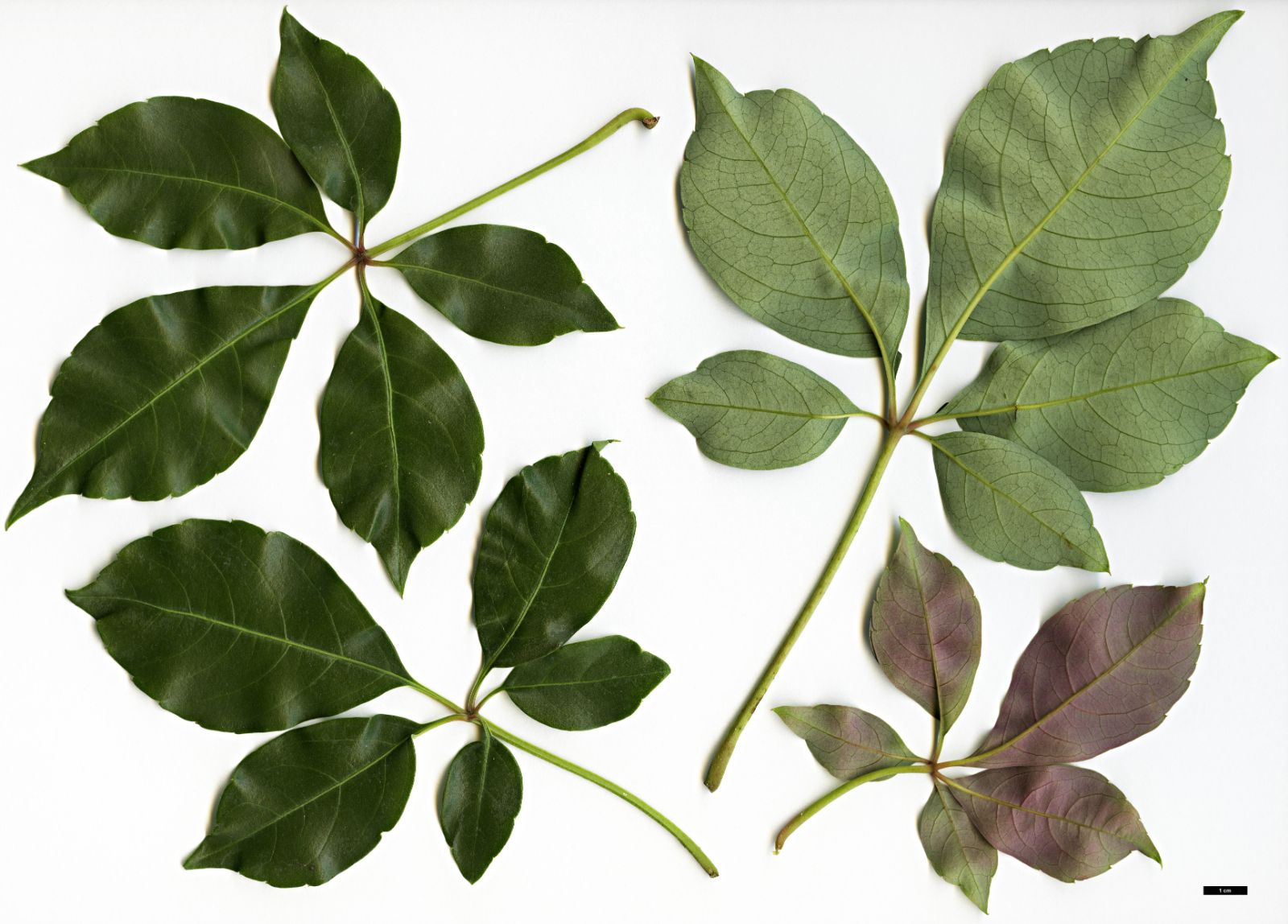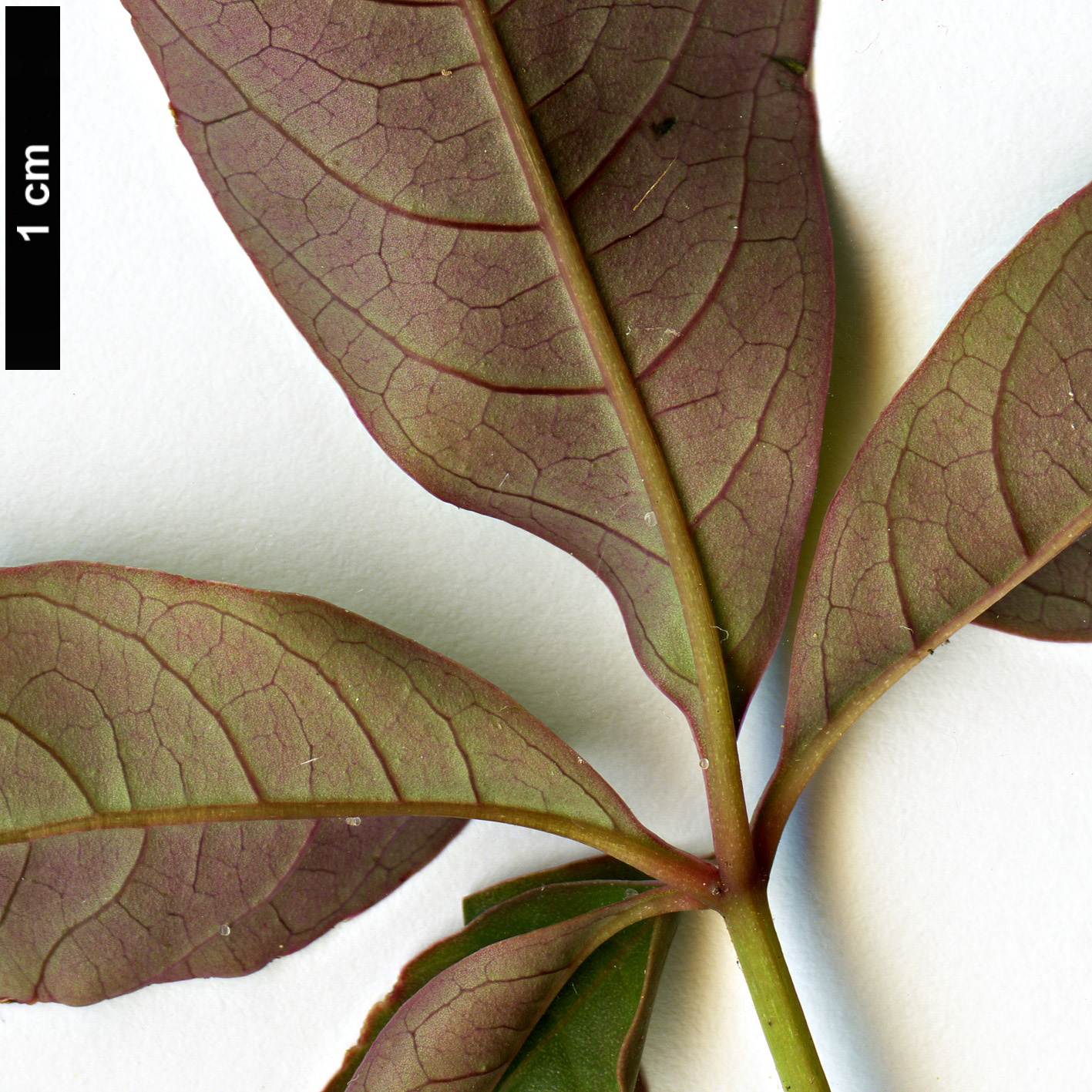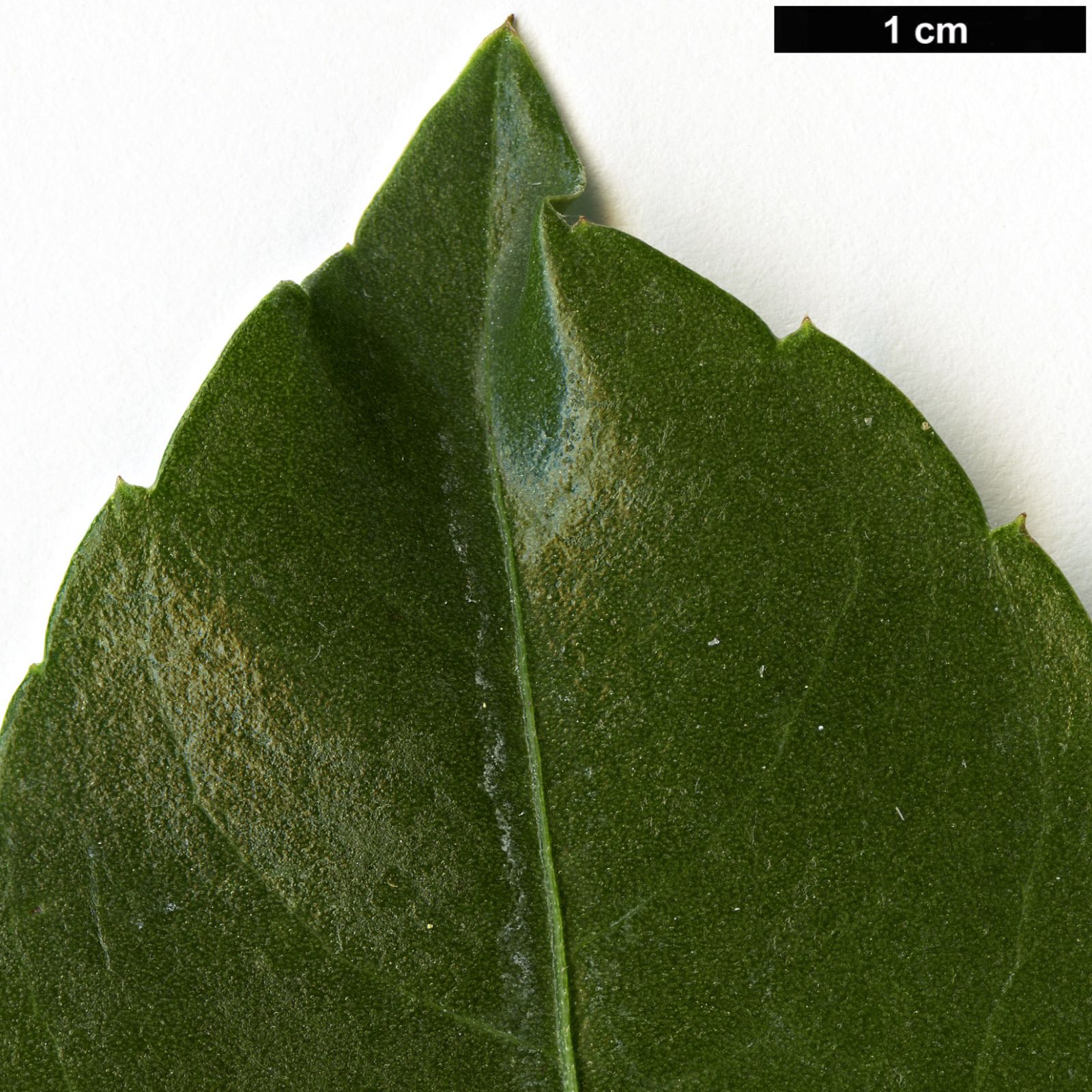Parthenocissus thomsonii
Credits
Article from Bean's Trees and Shrubs Hardy in the British Isles
Recommended citation
'Parthenocissus thomsonii' from the website Trees and Shrubs Online (treesandshrubsonline.
Genus
Synonyms
- Vitis thomsonii M. A. Laws.
- Cissus thomsonii (M. A. Laws.) Planch.
- Cayratia thomsonii (M. A. Laws.) Suessenguth
- P. henryi var. glaucescens Diels & Gilg
A slender, deciduous climber; young stems slightly downy at first, ribbed. Leaves composed normally of five leaflets, borne on a slender downy stalk 11⁄2 to 41⁄2 in. long. Leaflets oval or obovate, 1 to 4 in. long, 1⁄2 to 11⁄2 in. wide; slenderly pointed, the upper half shallowly but sharply toothed, the base entire and tapered to a stalk, 1⁄8 to 3⁄4 in. long; undersurface sparsely downy on the midrib, glossy. The entire leaf, leaf-stalk, and young shoots are of bright claret purple when young, becoming greenish purple later, changing finally to deep reddish purple. Flowers in cymes on a slender stalk.
A native mainly of W. and Central China, but described from a specimen collected in the Khasia Hills, Assam; introduced by Wilson from China in 1900, when collecting for Messrs. Veitch. It was awarded a First Class Certificate three years later and is, indeed, one of the most charming of the vines. It appears to be most nearly related to P. henryana, but is decidedly hardier.




